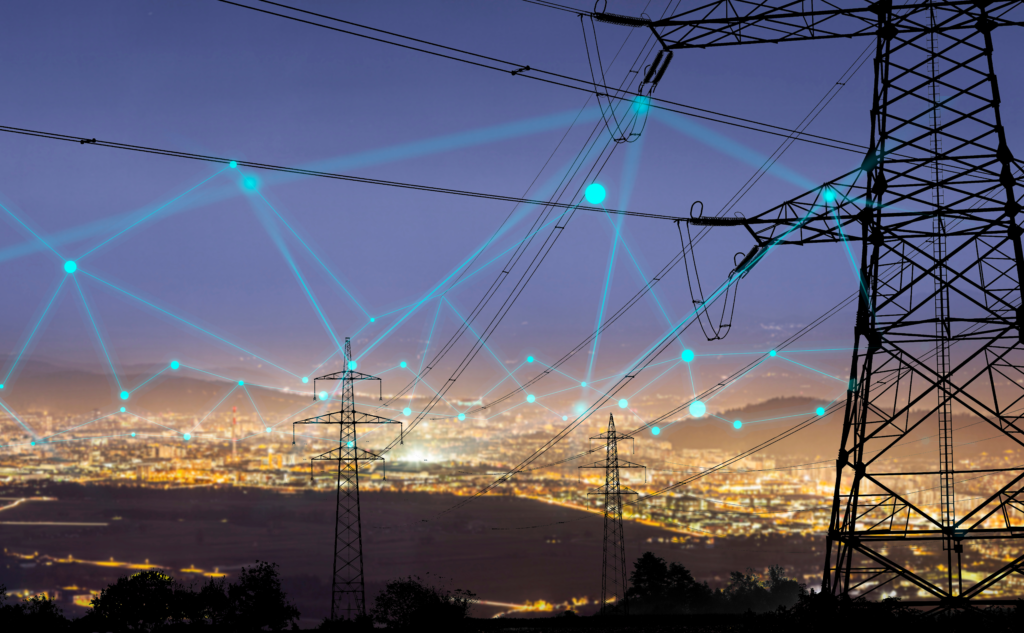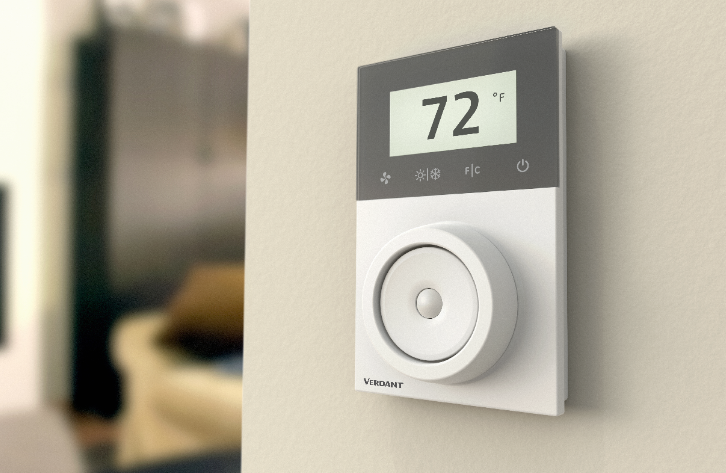As the world becomes more environmentally conscious, the adoption of smart energy management solutions is inevitably becoming a mandate for large commercial buildings. Demand response (DR) is one of those mandates that help reduce energy consumption during peak periods.
Whether you’re a building owner or a tenant, you certainly find yourself significantly impacted by the unprecedented rise of energy costs, as well as other sustainability factors like carbon taxes. Finding effective strategies to cut energy bills and navigate these challenges can be daunting.
If you’re a building owner and you’re the one paying the bills, you’re probably struggling to find ways to maintain low operating costs, especially considering that heating and cooling account for 40% of total commercial building electricity consumption. And if you’re a tenant, you’re likely interested in finding ways to reduce your utility bills during extreme cold and hot weather conditions.
In this blog post, we will explore the concept of demand response, highlighting its advantages for both building owners and residents. We’ll also discuss the impact of ESG building codes, and take a closer look at how Verdant is integrating demand response into its smart thermostats to improve energy management.
What is Demand Response?
Demand response is an energy management program that motivates building owners to adjust their energy use during peak periods, such as hot summer days or cold winter nights. By shifting the operation of high-energy appliances, adjusting temperatures in common areas, or turning off-nonessential lighting, DR programs help reduce energy consumption and stabilize the power grid.
As a result, it eliminates the need for additional power plants, prevents blackouts, and lowers electricity costs. Demand response plays a crucial role in optimizing energy usage and fostering a greener future for generations to come.
How Does Demand Response Work?
To participate in Demand response programs, users must have a smart thermostat, such as the industry-leading Verdant models. These smart thermostats establish a direct line of communication with the utility company, allowing aggregators to push temperature setbacks during DR events.
By connecting with the utility company’s system, the smart thermostat receives signals or notifications about peak demand periods. In response, it makes necessary adjustments to the temperature settings within the building. Here’s an overview of the demand response process:
Step 1: Demand Response Integration
Demand response management service providers integrate with Verdant’s demand response APIs and gain access to create DR events for properties.
Step 2: Electricity Peaks Forecast
Utility companies forecast electricity peaks based on weather conditions and send energy reduction requests.
Step 3: Demand Response Event
Demand response service providers use Verdant’s DR interface to create events specifically for users who have opted in for demand response.
Step 4: Financial Compensation
Verdant’s demand response partners distribute the generated revenue to users who actively participate in the demand response program, providing them with financial incentives for their reduced energy demand.
The Verdant smart thermostat communicates seamlessly with the utility company through cloud connections. This real-time interaction enables precise and efficient temperature adjustments, ensuring the building’s active participation in the demand response program.
How is Demand Response Beneficial for Residents?
By reducing their energy use during demand response events, tenants can receive financial incentives such as bill credits or cash payments. This serves as an effective strategy for saving money on energy bills, reducing carbon emissions, and contributing to a more sustainable future.
If building owners participate in DR programs, they may pass on some of the financial incentives to their tenants, resulting in reduced energy bills. For buildings with direct meters, residents can directly reap the financial benefits. Additionally, tenants can feel good about living in a building that takes steps to reduce its carbon footprint and contribute to a more sustainable future. By participating in DR programs, tenants play an important role in supporting environmental sustainability efforts.
Why is Demand Response Beneficial for Building Owners?
The real estate industry has recognized the importance of Environmental, Social, and Governance (ESG) practices in promoting sustainability and making smart investments for the future. Demand response programs can promote ESG practices by encouraging owners to invest in energy-efficient technologies, reduce their carbon footprint, and promote sustainable living practices among tenants.
DR programs can also help promote social and governance practices by reducing energy costs for tenants and promoting affordable housing. ESG regulations are becoming more and more prevalent with the rise of green building codes in some states, such as New York, California, Oregon, Washington, Illinois and Texas. Adopting demand response can help building owners meet ESG building codes, demonstrate their commitment to sustainability, and attract tenants who value eco-friendly living options.
Research indicates that sustainability holds great importance to younger age groups, including Gen Z and Millennials. A survey conducted by Nielsen demonstrates that 73% of Millennials are willing to spend extra money on sustainable goods. Similarly, a study by Cone Communications found that 87% of Gen Zers believe that companies should prioritize environmental and social responsibility.
Furthermore, a survey by Payless Power found that Millennials and Gen Zers are 27% more likely than baby boomers to buy a green home.
How does ESG Factor into Demand Response?
Demand response programs have gained considerable momentum as a sustainable solution in the United States. Leading the way in DR adoption is California, thanks to its ambitious clean energy objectives and proactive regulatory landscape. Utility companies like Pacific Gas and Electric (PG&E) offer notable DR programs.
There are numerous utility companies that actively implement DR programs throughout the country. For instance, Duke Energy rewards customers who lower their electricity usage when demand is highest with bill credits or incentives. Oncor Electric Delivery operates the Take A Load Off Texas (TALOT) program, which encourages participants to reduce their electricity usage during peak periods.
In New York, Consolidated Edison (Con Edison) has emerged as a key player in adopting and providing demand response programs. Con Edison’s initiatives, such as the Commercial System Relief Program, motivate commercial customers to lower their electricity usage during peak hours.
Technavio projects that the demand response (DR) market will experience a compound annual growth rate (CAGR) of 6.81% from 2022 to 2027, reaching an estimated market size of 2,251.76 million USD.
How do Verdant’s Smart Thermostats Work with Demand Response?
Verdant’s smart thermostats, the VX and ZX models, now support demand response in select regions. These innovative thermostats are specifically designed to assist building owners in optimizing energy consumption while ensuring optimal comfort levels for tenants.
With the integration of Verdant thermostats into their local utility company’s demand response program, building owners gain access to timely notifications that prompt them to adjust their energy usage during peak demand periods.
It’s important to note that owners or aggregators have the responsibility of informing tenants about DR events since no prior notification is displayed on the thermostat itself. However, once a DR event begins, a distinctive DR icon will appear on the Verdant thermostat to notify tenants. If they choose to not participate, tenants can opt out of the DR event.
The demand response process consists of four phases to minimize any inconvenience for residents:
Phase 1: Pre heat or pre cool
Prior to the event, your Verdant system will adjust the temperature of the units in advance, either warming or cooling them based on the residents’ preferred setpoint. This ensures that residents don’t experience any discomfort. If needed, your Verdant system will maintain the user’s preferred temperature prior to the scheduled event.
Phase 2: Pre-gap
Based on the type of demand response event, there can be a gap between the pre-heat or pre-cool and the start time of the actual DR event. Pre-gap state enables the partners to implement this gap. Users can cancel demand response events by changing the setpoint on the thermostat.
Phase 3: Demand Response Event
During the event, Verdant thermostats will let the temperature drift naturally until reaching the demand response setpoint.
Phase 4: Post Demand Response Event
Once the demand response event is completed, the thermostats return to the user setpoint at a lag of a few seconds to offset the risk of causing spikes in HVAC energy usage for the building.
Learn More About Verdant’s Demand Response Integration
For further details on how Verdant is integrating demand response functionality into the VX and ZX smart thermostats, contact us through this link.
The introduction of demand response capabilities into Verdant’s VX and ZX smart thermostats marks a significant step towards improving energy management and sustainability in buildings. By leveraging the advanced features of the Verdant thermostats, both building owners and tenants can achieve a balance between comfort and energy conservation.
Through these innovative solutions, Verdant empowers individuals and organizations to make a meaningful impact on the environment while enjoying the financial benefits that come with efficient energy management.





